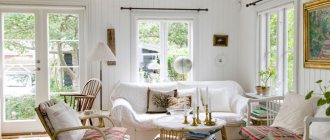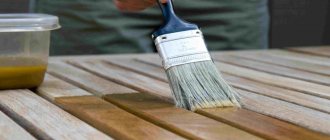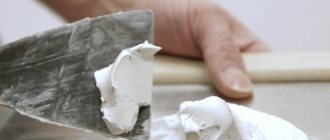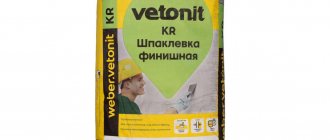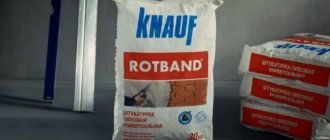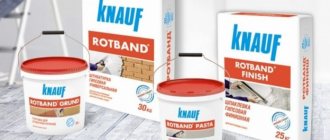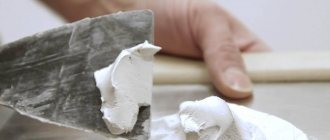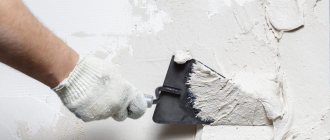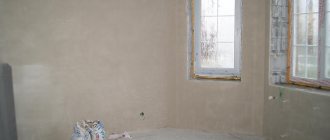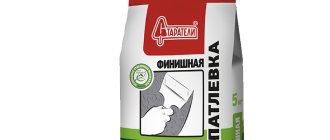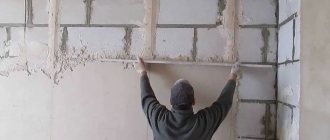What is PVA?
This product is widely known as an adhesive, but in relation to putty we should talk about a type of composition based on polyvinyl acetate, diluted with special additives. Unlike stationery PVA, construction modifications are characterized by higher adhesive ability, strength and resistance to external influences. Accordingly, PVA-based putty of this type has several improved qualities that allow it to bond materials that are rough and poorly interact with foreign structures. The adhesive contains special plasticizers with thickeners and solvents, as well as stabilizing ingredients, which, in particular, increase the reliability of laying the solution, its water resistance and the speed of setting after application.
Improved plaster.
By using some ingredients that we additionally introduced into the ready-made cement plaster, we obtained improved high-quality plaster from ordinary plaster. So further, in more detail about the composition of improved plaster, properties, execution technology!
Having experimented a little with ordinary plaster, we ended up with, in our opinion, a fairly strong base of plaster that does not crumble or crack after drying, and the performance characteristics at the time of application have improved significantly. It would be more correct to say that from simple plaster, improved high-quality plaster was obtained.
Purpose of putty with PVA
Despite the fact that the function of fastening two foreign materials is auxiliary for conventional putty, in this case the main emphasis is placed on it. Tasks such as leveling and priming on concrete and brick surfaces are carried out more efficiently thanks to the adhesive component. The intended purpose of polyvinyl acetate putty is still the interior finishing of surfaces that are planned to be further treated with whitewashing, painting or other finishing coatings. What is also important is that the increase in strength parameters allows the use of PVA-based putty for floors, including those made of wood. Restoring load-bearing joists or boards using polyvinyl acetate allows you to level the geometry of the flooring, as well as eliminate pockets of biological damage without resorting to a complete replacement of the covering. Another thing is that it must be a special composition of adhesive putty with additives that ensure biological restoration of the structure.
We glue the ceiling plinth (baguette).
After you have finished puttingtying the ceiling, it’s time to glue the ceiling plinth . Some people advise gluing the wallpaper first, and then gluing the baguette with a special glue. I’ll tell you the truth that this method is not very good, even walls in our apartments are very rare and it follows that when you glue the entire baguette, you will definitely have gaps in some places between the wall and the baguette, and there will be gaps at the joints . And besides, it will be quite difficult to re-glue the wallpaper without tearing off the baguette. So, it is best to glue before wallpapering and before painting the ceiling.
Homemade putty with PVA
Putties today perform many tasks that require special combinations of ingredients in the composition, which is confirmed by the same example with strengthening wood. Therefore, there is also a growing fashion for individual formulations of these compositions, taking into account a specific set of components and at the same time eliminating unnecessary additions. Also, do not forget that ready-made PVA-based putty is not cheap - about 25-30 rubles / kg. Obviously, a homemade solution will be cheaper.
So, what exactly can you make with your own hands from polyvinyl acetate? The simplest option is to combine PVA with chalk, which will act as a filler. In its pure form, this combination can be used as a finishing putty, but for rough work covering large areas it should be diluted with sawdust or shavings. Another recipe involves adding water-soluble varnish to the above composition. A feature of this mixture will be higher elasticity, which is more suitable for finishing work on delicate surfaces.
Making your own mixture
Moreover, you can make the putty mixture yourself. To do this, just take regular PVA glue and mix it with powdered chalk or plaster. If you only need a little mixture, you can use tooth powder.
The proportion of the components of the mixture should be as follows: for a three-liter jar of crushed chalk, take one glass of glue with a capacity of 200 ml. The mixture must be thoroughly stirred until the consistency of thick sour cream and the absence of lumps, after which it is ready for use.
The mixture must be thoroughly stirred until the consistency of thick sour cream and the absence of lumps.
To treat the surface of wood, part of the gypsum or chalk must be replaced with small oak sawdust, and then the masked defect will become completely invisible.
Preparing the surface for applying putty
Before starting work, special preparatory measures must be carried out. They include the elimination of deep defects with cracks, dents and chips, abrasive cleaning of dust and removal of greasy stains. Moreover, at the very beginning it would be useful to carry out defect detection of the surface to identify weak areas that could provoke the collapse of the old coating under external influence. Further restoration of the structure is carried out using cement-based plaster or special primers. It is not advisable to use PVA-based putty for such tasks, since it is a more delicate and targeted means of preparing the surface for further decorative finishing work. As for stubborn greasy and oily stains, they can be dealt with with acetone, white alcohol or other organic solvents.
Application technique
The main working tool is a spatula, and it will be useful to have a wide and narrow model on hand. The first will help in finishing large areas, and the second will make it easier to spot seal defective areas. The technique for using PVA-based putty is similar to laying plaster, but adjusted for a smaller volume. The mass is also distributed throughout the entire working area using uniform movements. If there are still bumps or dents, they must be filled completely. It is recommended to seal newly opened cracks with a mounting gun using polyurethane foam or sealant. The optimal layer of putty is 0.5 mm. It takes about 24 hours to fully gain strength for subsequent finishing stages at this thickness.
Material advantages
The main advantages of putty with PVA glue include high plasticity, versatility and many positive effects that appear already during the operation of the finished cladding. The material retains the original structure of the coating without succumbing to abrasion and other mechanical stress. As noted in reviews of PVA-based putty, there are also practical advantages for plasterers. In particular, the material does not get dirty, does not smell and is easily laid in a given shape, without causing inconvenience when distributing the mass on the surface.
Painting master class: Wall painting and putty relief
Wall painting has been in fashion for several years now. Increasingly, interior designers are using paints in their arsenal and creating literally masterpieces of wall painting. Not so long ago, along with wall painting, creating reliefs from putty and plaster became fashionable. And it’s not for nothing that the possibilities of ordinary putty are truly limitless if you learn how to use it correctly. And if you add acrylic interior paints to this, you can transform even the most ordinary interior beyond recognition.
Author: Zakhvatkina Ekaterina
I want to share with you my experience in wall painting and relief sculpting. I’ll say right away that this time I performed the relief for the first time and, one might say, I did everything “by touch” and thanks to some advice from the Internet. Of course, when starting work on such a serious transformation of the interior, you should do everything correctly from the very beginning - prepare the walls, level them and prime them, and then start sculpting. But I had a task to budgetly and inexpensively transform the walls in a children's out-of-school institution - the Center for Children's Creativity. I didn’t have to level or putty the walls because I didn’t have the funds for it. I simply hung paper wallpaper and primed it with white interior paint in one layer. And after that she began the main work of relief sculpting and painting.
To complete this work I needed:
- interior white paint, 3 liters;
- colored colors for the interior (red, yellow, green, blue, purple, brown), 1 bottle of each color;
- finishing putty, 10 kg;
- PVA glue, 0.5 liters;
- wire, bandages (you can use gauze or cotton fabric) to create branches;
- spatulas, palette knives, brushes, sandpaper.
1. Of course, the first thing I did was make a pencil sketch on the wall. I chose a fairy-tale theme, everything came from Lukomorye and I “had a vision” of different fairy-tale corners and heroes.
2. Then I started sculpting the tree. For better adhesion of the putty, I hammered some nails into the wall and stretched a wire between them, like a spider web. In principle, the volume of relief I had was not very large, the putty would have stuck to the wall anyway, but I played it safe. The more putty you plan to put on the wall, the more work you need to do to strengthen it - hammer nails into the wall and stretch wire between them.
3. I dilute the putty with water with PVA glue pre-dissolved in it. To be honest, I poured the glue on my eye. Then I didn’t yet have the thought of writing a master class, so I didn’t remember the proportions. But to at least roughly say, then for a glass of water there are 2-3 tablespoons of glue. The more glue you add, the stronger the relief will be after drying. But you won’t be able to sand an overly strong “oak” relief with sandpaper or cut any indentations in it, etc. Therefore, I advise you not to get carried away with glue.
4. Before applying the putty mixture to the wall, I coat the wall in that place with PVA glue. Not too thick so that the putty does not slide down the wall. I apply the mixture with a spatula, forming small parts with a palette knife and fingers. In general, whatever is convenient for someone, he applies it. I also cut the recesses with a palette knife.
Disadvantages of the material
The inclusion of polyvinyl acetate in traditional putty also provided it with several weak points. These include the following:
- Restrictions on use. Such coatings are not recommended for use in rooms where high humidity prevails or where tiles are planned to be laid.
- Long drying period. As already noted, PVA-based putty undergoes a polymerization period of about a day, while traditional compositions can dry in a few hours, which reduces the time for carrying out work activities.
- High training requirements. PVA glue is extremely sensitive to the condition of the surface on which it is applied. Therefore, it will be possible to achieve high adhesion only if the working base is thoroughly cleaned.
